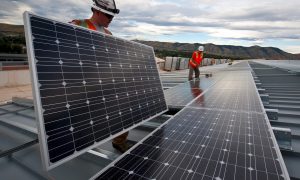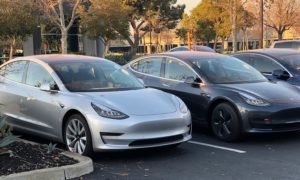News
SolarCity Struggles: National Gridlock (Part III)
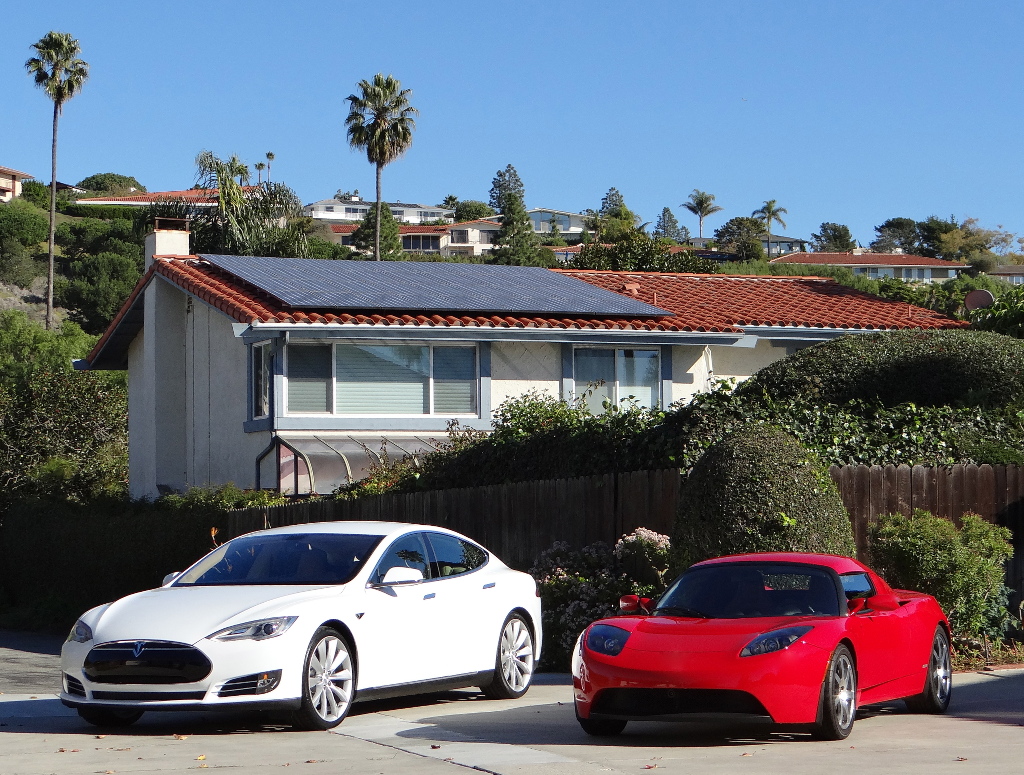
In this final post within my SolarCity Struggles series I’ll be outlining the additional complexities that surfaced after our local power company, National Grid, got involved.
National Grid-Lock
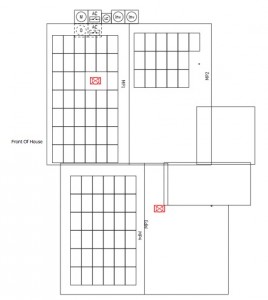 Having already experienced some delays on my solar project due to architectural redesigns, National Grid jumped into the mix to make things even worse by throwing up one road block after another. There was a conflict of interest for National Grid to assist on the project since we would be shifting more than $170,000 of revenue from them to SolarCity. I’d only see a tiny slice of that by way of my energy savings. Despite many city mandates to be “More Green”, the utility companies clearly have no interest in assisting customers to go solar since it would be counter productive for them.
Having already experienced some delays on my solar project due to architectural redesigns, National Grid jumped into the mix to make things even worse by throwing up one road block after another. There was a conflict of interest for National Grid to assist on the project since we would be shifting more than $170,000 of revenue from them to SolarCity. I’d only see a tiny slice of that by way of my energy savings. Despite many city mandates to be “More Green”, the utility companies clearly have no interest in assisting customers to go solar since it would be counter productive for them.
Roadblock #1
National Grid would not allow “net metering” (where you can re-supply energy through solar power) for two different meters at the same address. SolarCity stepped up and offered to join my two meters and upgrade my panel (from 400A to 600A) in order to support net metering. Accounting issues aside, I agreed to the proposed change and moved forward with yet another site visit that would lead to an engineering redesign.
Roadblock #2
Having (verbally) moved past this, National Grid then reported that the transformer for my area was only capable of handling 23kW of generated power and could not support SolarCity’s proposed 56kW system. This was by the most serious setback since it would require a design that would cut my generation down to 23kW or less. This meant dropping the farm completely and scaling the house from 35kW to 23kW.
A 23kW design called for the front of my house to have solar panels while only a portion of the rear of the house would be retrofitted with panels. This would have looked really odd so we decided to scale back the design to a 18kW system and only include panels on the front of the house.
National Grid informed me that the transformers support between 8 – 12 houses in my area so any neighbors that undergo a solar project will be limited to the remaining 5kW that the transformer can support.
Next Steps
Going from a 56kW to 18kW (a 68% drop in planned production) system will reduce my energy coverage to 32% of my power needs through solar. This is unfortunately the case due to National Grid’s limitation despite my property having enough roof surface to generate 100% of my energy needs.
I will save approximately $56,000 over the next 20 years with this smaller set up, a far departure from the original projected savings of $105,000 but still worth pursuing.
A friendly note from SolarCity arrived on September 1st letting me know that my installation was scheduled for December 8th and 9th because of the magnitude of the project. Considering this 18kW system is a third of what would have been, I couldn’t help but wonder how SolarCity would have handled the original plans. I can’t imagine starting this project in the dead of a New England winter. SolarCity indicated that the project would require 4-6 weeks before the “go live” date which meant I wouldn’t be completing until January 2015. That puts the project at about 10 months from start (initial consultation) to finish and assuming all goes well from here on out.
Summary
SolarCity has made a number of mistakes on this project since the beginning; from improperly sizing the system to not knowing the requirements and restrictions of the local power company; to not following owner requests on layout; to not understanding power generation limits imposed by the power company.
My experience with SolarCity has led me to conclude that they’re not ready for widespread adoption outside of key markets and have a lot of work and learning to do before they will be ready for that next stage of growth.
I truly hope the project moves forward. My next updates will be on the post installation experience which will hopefully take place sometime between now and the end of this year. Stay tuned.
SolarCity Struggles Series – Read from the beginning
Image Source: Sun Powered EVs
Elon Musk
Tesla doubles down on Robotaxi launch date, putting a big bet on its timeline
Tesla continues to double down on its June goal to launch the Robotaxi ride-hailing platform.

Tesla has doubled down on its potential launch date for the Robotaxi ride-hailing platform, which will utilize the Cybercab and other vehicles in its lineup to offer driverless rides in Austin, Texas.
Tesla said earlier this year that it was in talks with the City of Austin to launch its first Robotaxi rides, and it planned to launch the platform in June.
This has been a widely discussed timeline in the community, with some confident in the company’s ability to offer it based on the progress of the Full Self-Driving suite.
However, others are skeptical of it based on Tesla’s history of meeting timelines, especially regarding its rollout of FSD.
Nevertheless, Tesla was asked when it would be able to offer Robotaxi rides and where, and it clearly is not backing down from that June date:
In Austin, 🔜
— Tesla (@Tesla) April 18, 2025
It is getting to a point where Tesla is showing incredible confidence regarding the rollout of the Robotaxi in June. We have not seen this kind of reiteration regarding the rollout of something regarding autonomy from Tesla at any point in the past.
CEO Elon Musk has even been increasingly confident that Tesla will meet its target. Earlier this week, he said the vehicles will be able to roll off production lines and drive themselves straight to a customer’s house:
Elon Musk continues to push optimistic goal for Tesla Full Self-Driving
There could be some discussion of an acceptable grace period, as the timeline for the Robotaxi rollout could still be considered a success, even if it were a month or two late. However, if it were pushed back further into 2025 or even 2026, skepticism regarding these timelines would continue to persist.
As of right now, it seems Tesla is extremely confident it will meet its goal.
Elon Musk
Tesla Semi fleet from Frito-Lay gets more charging at Bakersfield factory
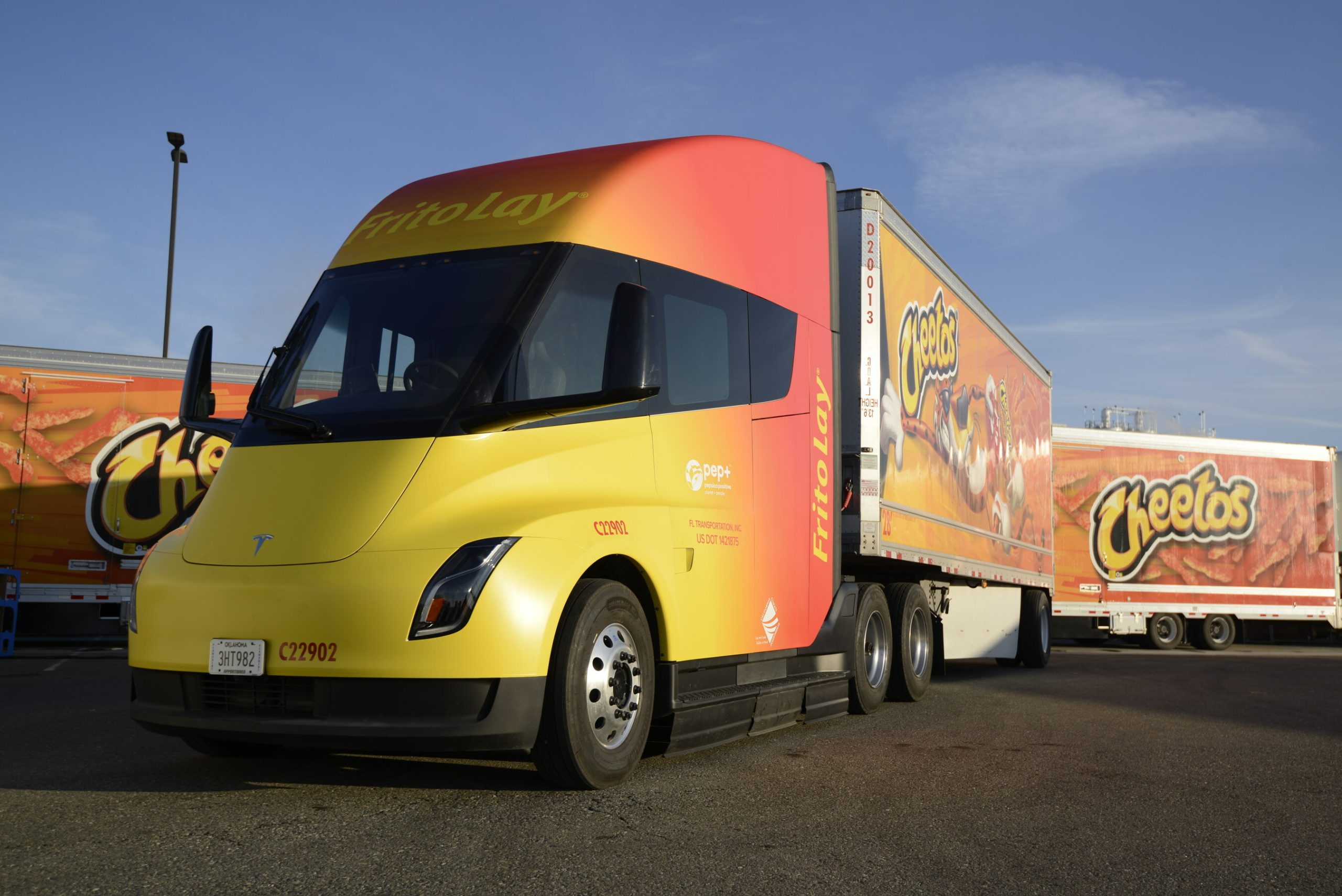
Among the several companies that have had the opportunity to add Tesla Semi all-electric Class 8 trucks to their fleets earlier than others, the most notable is arguably Frito-Lay, which has utilized the vehicle for a couple of years now.
However, as their fleet is making more local runs and there are undoubtedly plans to expand to more Semi units, the company has recognized it needs additional Megachargers to give juice to their trucks.
As a result, Frit-Lay decided to build more chargers at their Bakersfield, California facility, according to new permits filed by Tesla:
🚨 Frito-Lay is building an 8-stall Megacharger array at its factory in Bakersfield, California https://t.co/qARfJjogXF pic.twitter.com/gvorIVxsoc
— TESLARATI (@Teslarati) April 18, 2025
There are already chargers at the company’s Modesto, California, factory, but Bakersfield is roughly three hours south of Modesto.
Interestingly, Tesla is calling the chargers “Semi Chargers” in the filing, potentially hinting that it is no longer referring to them as “Megachargers,” as they have been in the past. This is a relatively minor detail, but it is worth taking note of.
In 2022, Frito-Lay began installing these chargers in preparation for the Semi to become one of the company’s main logistics tools for deliveries in California and surrounding states.
Frito-Lay is not the only company that has chosen to utilize the Tesla Semi for these early “pilot” runs. PepsiCo has also been a company that has used the Semi very publicly over the past two years.
Additionally, the Tesla Semi participated in the Run on Less EV trucking study back in late 2023, where it managed to complete a 1,000-mile run in a single day:
Tesla Semi logs 1,000-mile day in Run on Less EV trucking study
Tesla is planning to ramp production of the Semi late this year. On the Q4 2024 Earnings Call, VP of Vehicle Engineering Lars Moravy said the company would be focusing on the first builds of the Semi’s high-volume design late this year before ramping production in the early portion of 2026:
“We just closed out the Semi factory roof and walls last week in Reno, a schedule which is great with the weather. In Reno, you never know what’s going to happen. But we’re prepping for mechanical installation of all the equipment in the coming months. The first builds of the high-volume Semi design will come late this year in 2025 and begin ramping early in 2026.”
Tesla will build these units at a new Semi production facility located in Reno near its Gigafactory. The company is getting closer to finishing construction, as a drone video from this morning showed the facility is coming along at a good pace:
🚨Tesla Semi factory progress update: pic.twitter.com/dlzIjKwfT3
— TESLARATI (@Teslarati) April 18, 2025
News
Tesla Cybercab no longer using chase vehicles in Giga Texas
Elon Musk expects Tesla to produce about 2 million Cybercab units per year.
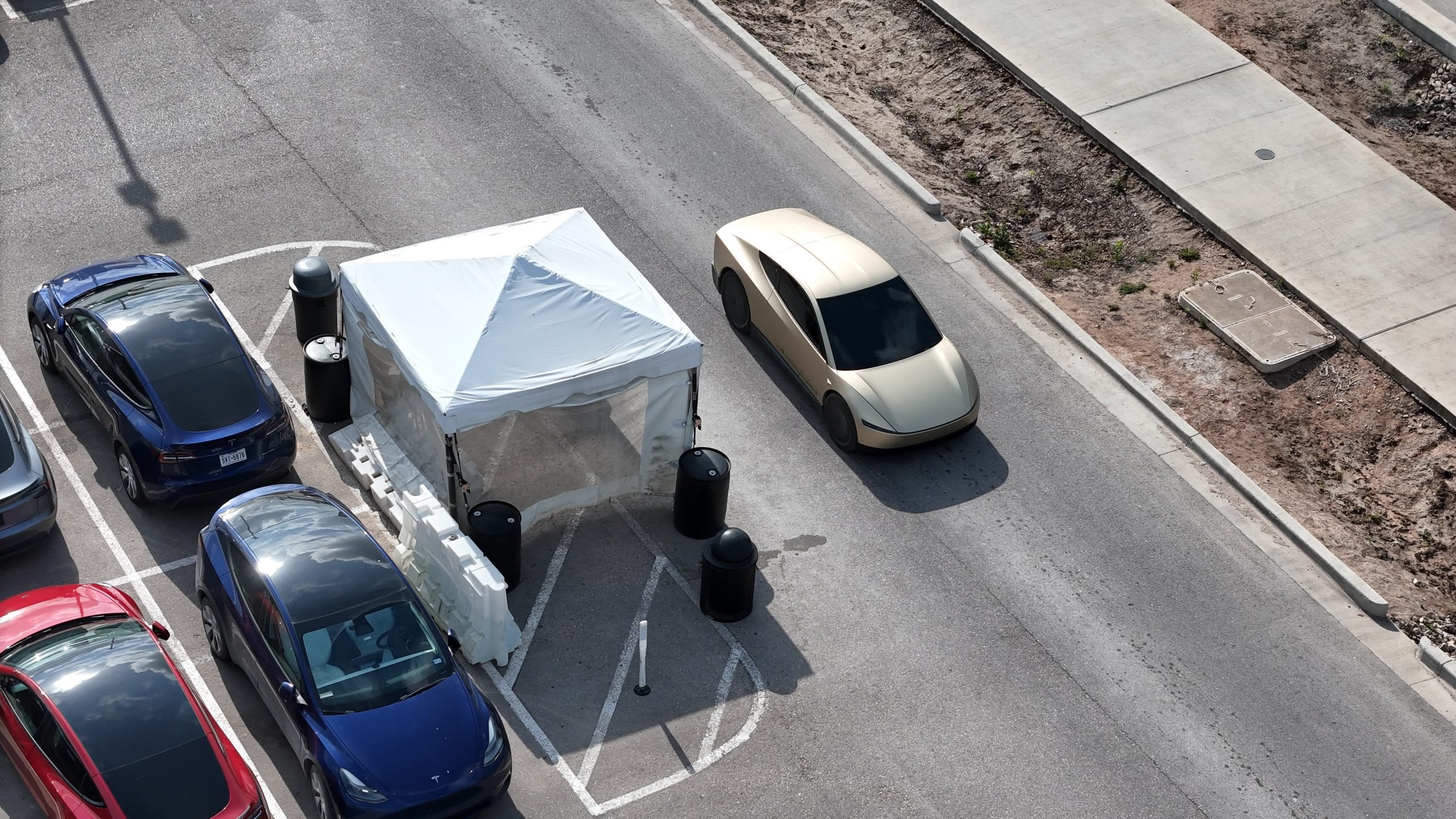
The Tesla Cybercab is the company’s first vehicle that is designed solely for autonomous driving. And while the spacious two-seater is expected to start volume production in 2026, the vehicle’s development seems to be moving at a steady pace.
This was hinted at in recent images taken by a longtime Tesla watcher at the Giga Texas complex.
Tesla Cybercab Production
The Cybercab will likely be Tesla’s highest volume vehicle, with CEO Elon Musk stating during the company’s Q1 2025 All-Hands meeting that the robotaxi’s production line will resemble a high-speed consumer electronics line. Part of this is due to Tesla’s unboxed process, which should make the Cybercab easy to produce.
Elon Musk expects Tesla to produce about 2 million Cybercabs per year. And while the vehicle is expected to see volume production at Giga Texas next year, the CEO noted that the vehicle will be manufactured in more than one facility when it is fully ramped.
No More Chase Cars
While the Cybercab is not yet being produced, Tesla is evidently busy testing the vehicle’s fully autonomous driving system. This could be hinted at by the Cybercabs that have been spotted around the Giga Texas complex over the past months. Following last year’s We, Robot event, drone operators such as longtime Tesla watcher Joe Tegtmeyer have spotted Cybercabs being tested around the Giga Texas complex.
At the time, videos from Giga Texas showed that the driverless Cybercabs were always accompanied by a manually driven Model 3 validation chase car. This was understandable considering that the Giga Texas complex features pedestrians, other cars, and construction areas. As per the drone operator in a recent post on social media platform X, however, Tesla seems to have stopped using chase cars for its Cybercab tests a few weeks ago.
Aggressive Tints
The reasons behind this alleged update are up for speculation, though it would not be surprising if the Cybercab’s autonomous driving system could now safely navigate the Gigafactory Texas complex on its own. Interestingly enough, the Cybercabs that were recently photographed by the drone operator featured very aggressive tint, making it almost impossible to make out the interior of the robotaxi.
This is quite interesting as other Cybercabs that have been spotted around Giga Texas were only equipped with semi-dark tints. One such vehicle that was spotted in February was even speculated to be fitted with an apparent steering wheel.
-

 News2 weeks ago
News2 weeks agoTesla celebrates key milestone for 4680 battery cell production cost
-
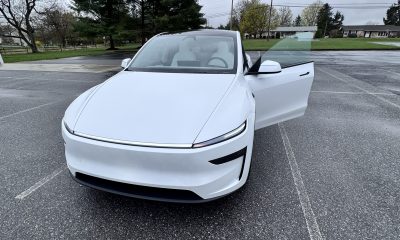
 News2 weeks ago
News2 weeks agoI took a Tesla new Model Y Demo Drive – Here’s what I learned
-
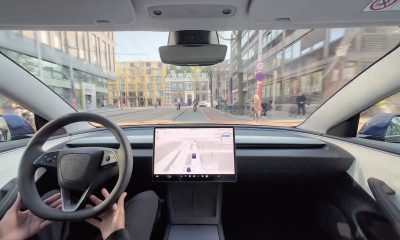
 News2 weeks ago
News2 weeks agoTesla Europe shares FSD test video weeks ahead of launch target
-

 News2 weeks ago
News2 weeks agoThis Tesla executive is leaving the company after over 12 years
-
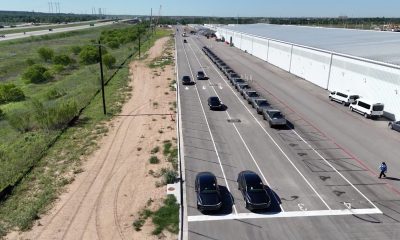
 News2 weeks ago
News2 weeks agoTesla’s Giga Texas vehicles now drive themselves to outbound lot
-
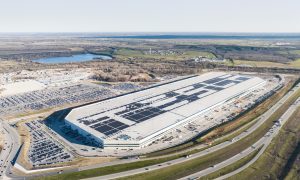
 News2 weeks ago
News2 weeks agoTesla’s ecological paradise near Giga Texas takes shape
-

 News2 weeks ago
News2 weeks agoElon Musk and top Trump trade advisor Peter Navarro lock horns over tariffs
-

 News2 weeks ago
News2 weeks agoTesla bull lowers price target citing ‘brand crisis’








